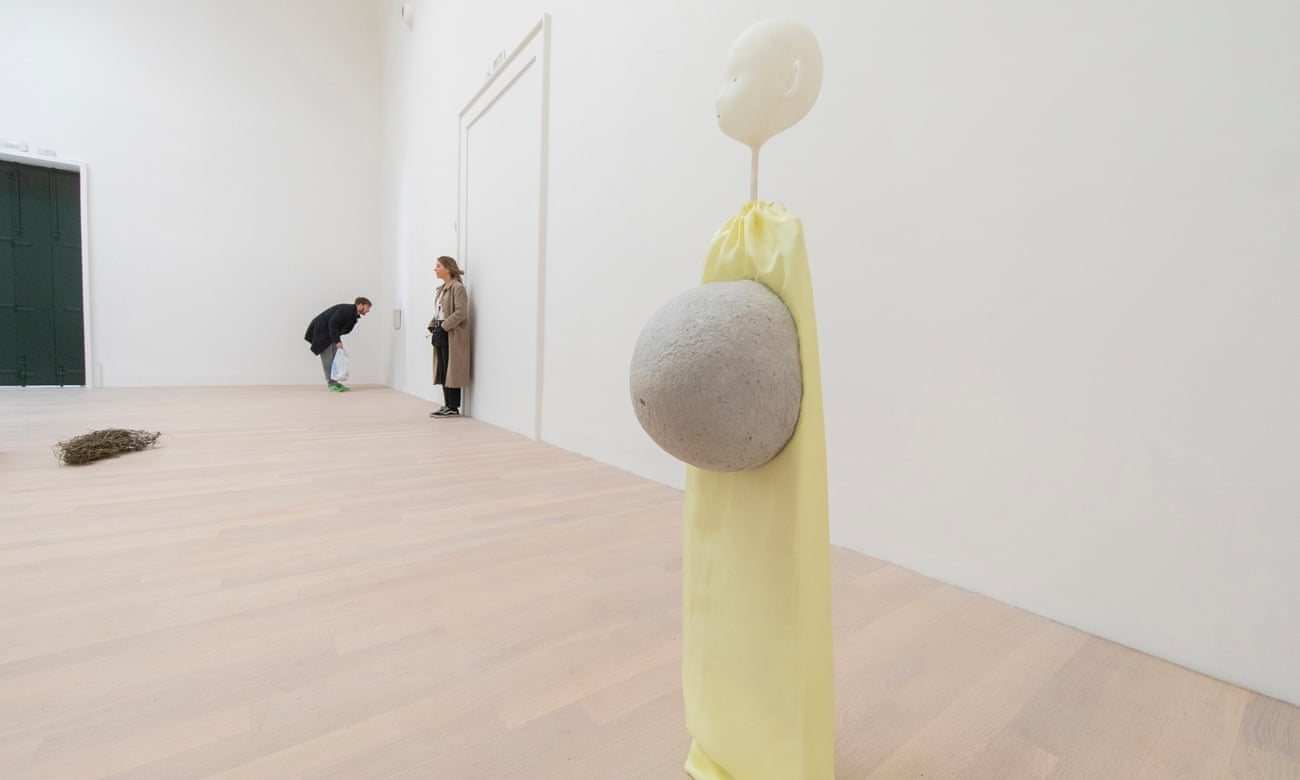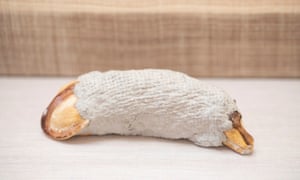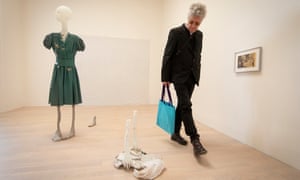Should I scream or call social services? Cathy Wilkes at Venice Biennale review
 With Brillo pads, a dead dragonfly and a disembodied hand, Wilkes’s British pavilion biennale show aims for tender but veers into a horrible domestic drama
With Brillo pads, a dead dragonfly and a disembodied hand, Wilkes’s British pavilion biennale show aims for tender but veers into a horrible domestic drama
athy Wilkes’s untitled accumulations of stray objects and schematic, sculpted figures inhabit the British pavilion at the Venice Biennale as if it were a house, albeit one that is sparse and cold and filled more with secrets and things unsaid than by life. At certain points, pictures and crockery are arrayed on the white walls, and there’s glassware on the shelf, lace on the table, a Brillo pad and a disembodied hand in the washing-up bowl.
Five children wash in a bath in a cutesy little print that’s not by Wilkes. More children stand about with distended bellies and dumb, bean-shaped heads, eyes like dots, their expressions inscrutable. Dolls or people, it is hard to tell: sculpted beings. They might be traumatised and there’s nothing much for them to do, as the biennale crowds come steaming through. A taller figure I take for the children’s mother stands alone in a striped green dress decorated with stuck-on photographs of a child eating soup. Her head is a white void and her legs and bare feet are cartoonish, tired, crumbling. An extra foot, unattached to her body, lags behind on the floor. I think of the footstep of someone who isn’t there.

All this is beginning to accumulate into some sort of suspended narrative. There’s a room hung with paintings. One green canvas is covered with thin, rhythmic pencil lines, as though scrawled on by one of Wilkes’s bored sculpted children. Other paintings are washy, indeterminate landscapes; three more give a clearer view of hills or small mountains.
It is all very well, in the catalogue essay, to quote TS Eliot’s The Wastelandand Little Gidding, and Nobel Peace Prize laureate and poet Liu Xiaobo, but signalling affinities doesn’t get us very far. It all feels like heavy breathing. On a large table, or rather a bare frame covered in a pristine translucent cloth, a branch of thorns, dried stems, desiccated leaves and open, empty pages of notebooks are arranged with casual precision. By the floor, more things are laid out in a row, like a list: a bit of silver paper, a dead dragonfly, a coin, an empty cardboard toilet roll, papier-mache casts of something incomplete. Down by the wall, a soiled flannel and a little plant in a jar. All these leftovers, stuff someone hasn’t cleared away or thrown out, are laid out in a way that feels more repressed than playful.

Other people’s lives often feel creepy and weird if you don’t have the key to unlock their particular rituals and habits, the coordinates of their everyday. Domestic space can be terrifying, and we can be terrorised by their silences. Even the spaces between things here are a sort of clue or evidence. Wilkes’s work may aim for something tender and melancholic, but teeters on the verge of a horrible drama that is never arrived at. The commonplace and sometimes jarring, dislocated objects set about the place in the natural daylight of the pavilion strive for something beyond portentousness, but there is an infuriating, cumulative preciousness at work. I want to scream, or run away, or send for social services.
